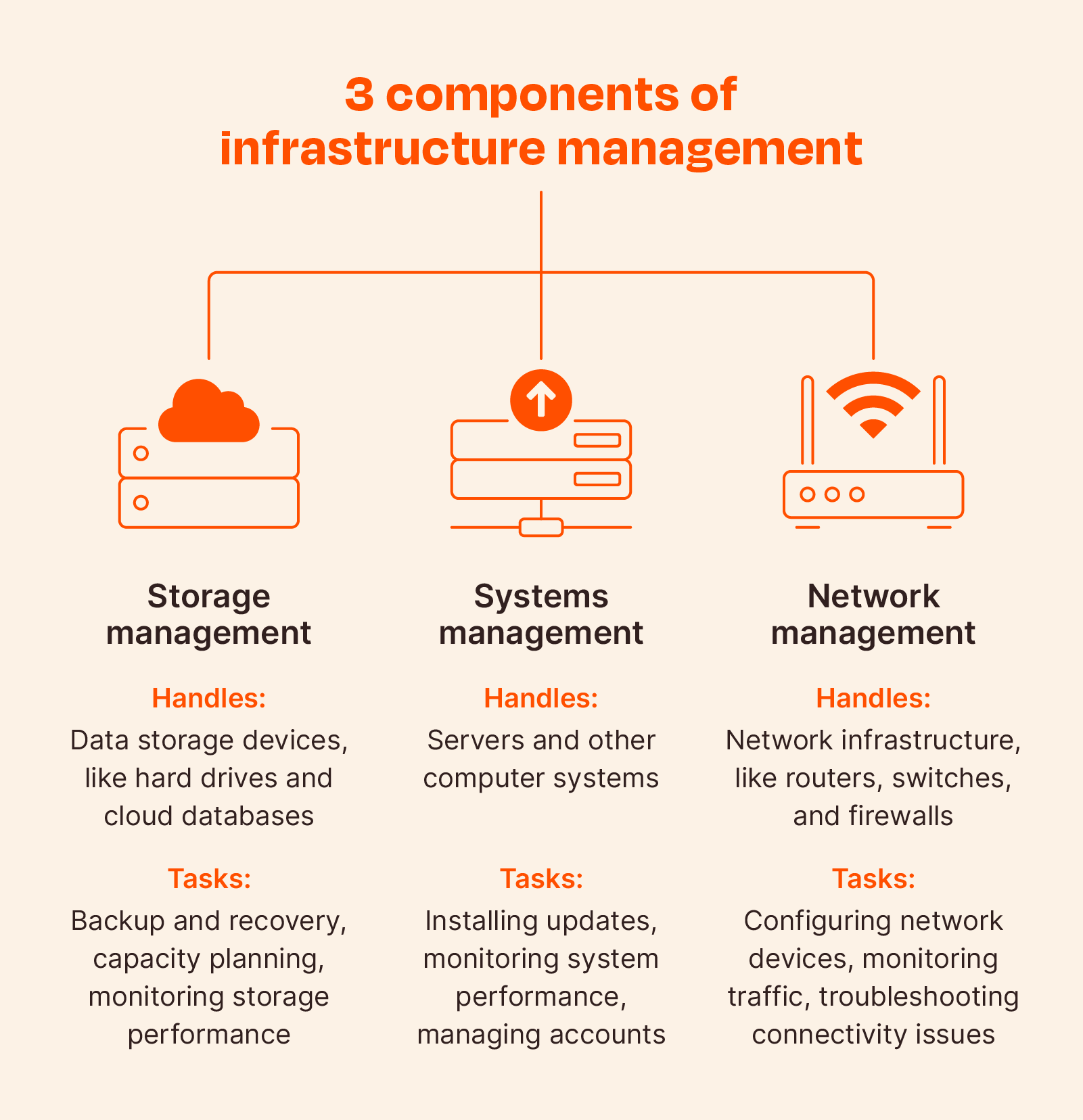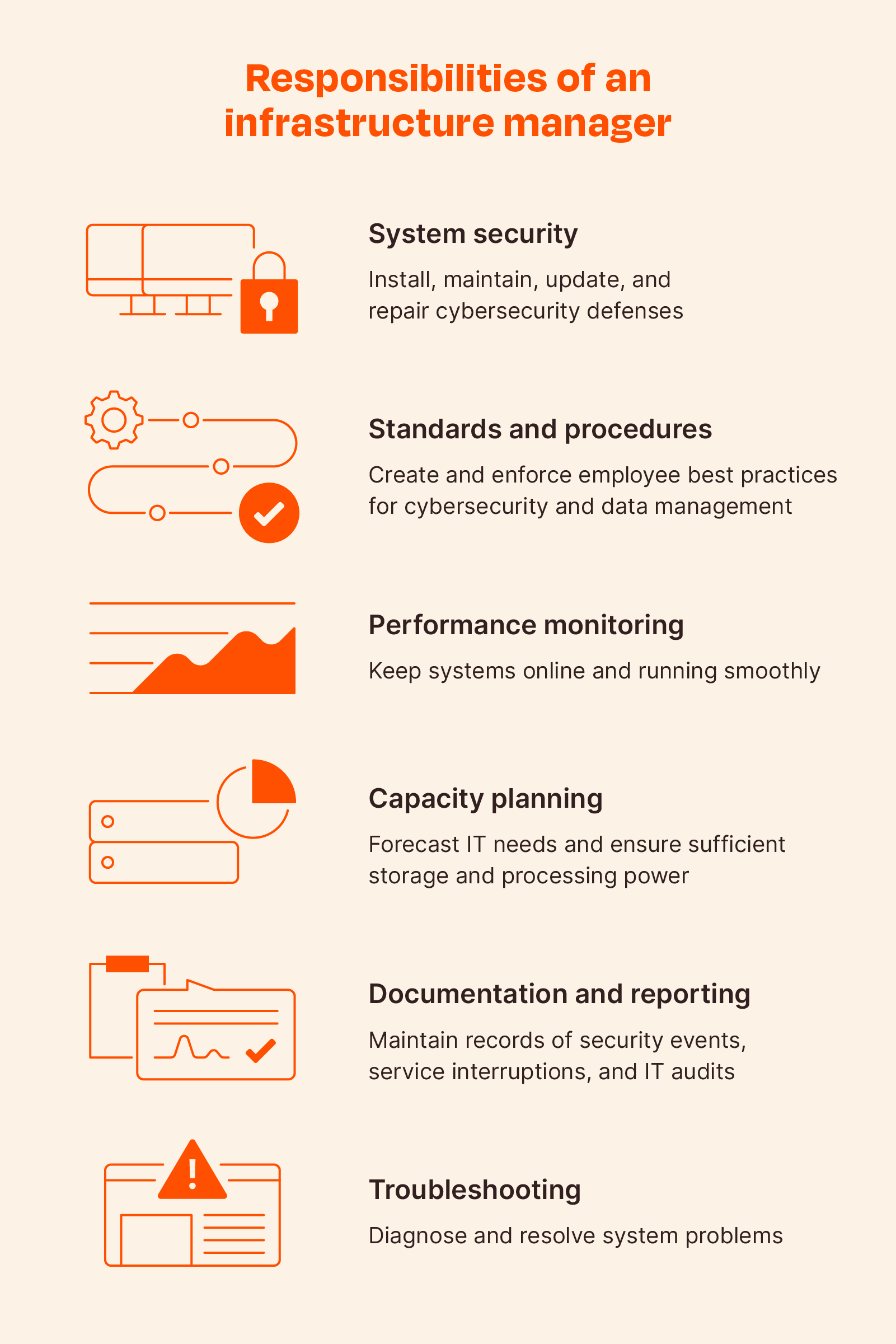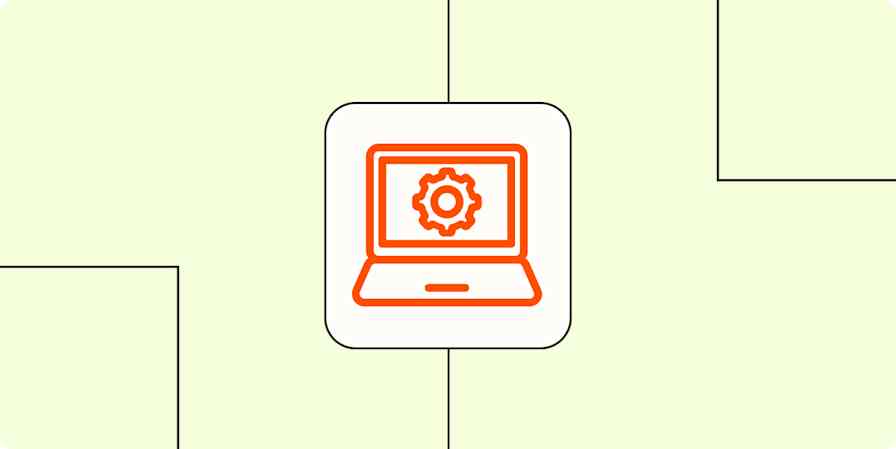When I hear the word "infrastructure," the first thing that pops into my head is a map of every road, bridge, and waterway in the country. Obviously, that's not what people mean when they talk about infrastructure management in business, but it's also not too terribly far off.
In business, infrastructure refers to all of the technological components that make up a company's information technology (IT) systems. It includes things like computers, servers, and routers, as well as the networks that connect them—the IT system's roads and bridges.
Table of contents:
What is IT infrastructure management?
Infrastructure management is the process of keeping an organization's IT infrastructure—hardware, data storage, operating systems, networks and communications, enterprise software, and internet platforms—running smoothly. Sounds simple enough, but the list of tasks involved in achieving that outcome is long. The easiest way to think of infrastructure management is in three broad categories:
Storage management involves tasks like backup and recovery, capacity planning, and storage performance monitoring.
System management involves tasks like installing updates, monitoring system performance, and setting up and managing accounts.
Network management involves tasks like configuring network devices, installing firewalls, monitoring traffic, and troubleshooting connectivity issues.

Recap: the term "IT infrastructure" refers to the physical hardware and software components that are used to support an organization's information technology (IT) operations. This includes things like servers, devices, networking equipment, and software applications. It also includes the network of systems and processes that are used to manage these IT resources.
IT managers are responsible for setting up, maintaining, and troubleshooting systems that can be grouped into six main categories:
Hardware platforms
Operating systems
Enterprise software
Data storage
Networks and communications
Internet platforms
Benefits of infrastructure management
Infrastructure management can provide a variety of benefits to your organization including the following:
Reduces system downtime
Streamlines operations and workflows
Improves response time
Cuts down on operational risks
Supports full integration of all systems
Decreases cost due to automation, better efficiencies, and capacity planning
Aids in data security
Responsibilities of an infrastructure manager
Each infrastructure manager's specific tasks will vary depending on several factors, like the size and shape of their organization's networks and what infrastructure component they're working on. But there are five broad responsibilities that all IT managers will encounter no matter what:
System security: System security covers everything necessary to keep your infrastructure safe, including installing antivirus software and firewalls, implementing good password practices, encrypting sensitive files and communications, and configuring and monitoring alerts. Keeping track of all this can be tricky unless you automate your cybersecurity processes. For example, you might have all your documents automatically sent to AnonyFlow for encryption instead of counting on employees to do it themselves.
Standards and procedures (S&P): The IT manager creates and enacts processes that ensure the company properly utilizes its IT. S&P largely consists of things like training and enforcing the company's IT maintenance and security processes.
Performance monitoring: Some popular IT performance monitoring KPIs include outage data (frequency, mean time to resolve, total downtime), storage and utilization (RAM utilization, available storage space), and network performance (upload and download speeds, network latency).
Documentation and reporting: Without a rigorous documentation process to track how different elements of your infrastructure are performing, enacting IT standards and practices is almost impossible. The IT manager is responsible for creating training materials, maintaining IT system logs, tracking and reporting on system performance, and writing incident reports when a security issue or breach takes place.
Systems development: IT managers also create new systems as needs arise. Especially in large organizations or those that handle sensitive data, the IT manager must create and follow a detailed process for implementing new tools.

While smaller companies and solo operations can usually get by with just a few of the things on this list, IT management tasks start to pile up quickly as your organization grows. Combine solid employee cybersecurity training, an investment in IT software and personnel, and regular IT audits to keep your organization's systems running smoothly.
Related reading:
This post was originally published in August 2022 and has also had contributions from Shea Stevens. The most recent update was in August 2023.










